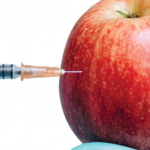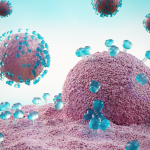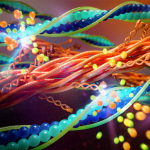 Mechanics & Energetics in Soft Active Structural Systems – Virus Replication, Puncture Mechanics, and Cytoskeletal Contraction
Mechanics & Energetics in Soft Active Structural Systems – Virus Replication, Puncture Mechanics, and Cytoskeletal Contraction
Speaker: Dr. Mattia Bacca, Assistant Professor UBC Mechanical Engineering
Principle Investigator at the Micro & Nano Mechanics Lab. Associate member UBC School of Biomedical Engineering, Institute of Applied Mathematics.
Location: CEME Building (6250 Applied Science Lane), room 2202
Zoom: https://ubc.zoom.us/j/9754677927?pwd=NUJrZm9SRExZRnk4bVVGd0MvUERBZz09
(Meeting ID: 975 467 7927 | Passcode: 649012)
The Department of Mechanical Engineering’s Fall Seminar Series shares cutting-edge research by MECH faculty members.
Abstract:
This seminar will explore three problems in the realm of soft active structural systems, i.e., systems characterized by an active chemo-mechanical behaviour, and undergoing large elastic deformations. These three problems summarize the latest activities of the Micro & Nano Mechanics Lab, led by Dr. Mattia Bacca, and are (i) virus replication, (ii) puncture mechanics, and (iii) cytoskeletal contraction.
(i) Virus replication [infection] involves large deflections of the infected cell membrane, a process accommodated by specific adhesive interactions between the virus ligands (spike proteins) and the viral nucleocapsid [cell receptors]. The size of the virion (virus particle) determines the rate at which it can be replicated from an infected cell and that at which it can re-infect a cell. As demonstrated in this seminar, this mechanism can control the size distribution of a virus population.
(ii) Puncture mechanics studies the critical forces required to insert a needle into a soft material (e.g., tissue) and to make the needle continuously penetrate into it. Based on the tip radius and geometry, on the mechanical properties of the cut material, and on the needle-specimen frictional interactions, one can evaluate the above forces and theorize strategies to improve the resistance of the material against puncture.
(iii) Cytoskeletal contraction is the active process through which biological cells continuously undergo to create their dynamic homeostasis. This process is controlled by ATP (adenosine triphosphate) hydrolysis, a chemical reaction that mediates the mechanical power generated by molecular motors such as myosin, the engine of animal muscles. The kinetics of contraction is determined by the motor efficiency, the hydrolysis reaction rate, and the diffusivity of the cytosol, and is affected by the metabolic adaptation of cells.



Biography:
Dr. Mattia Bacca obtained Bachelor’s and Master’s degrees in Civil Engineering at the University of Trento (Italy), in 2009. He then obtained a PhD in Structural Engineering at the same university, in 2013. Then he joined the Department of Mechanical Engineering and Materials at the University of California, Santa Barbara (USA) as a Postdoctoral Fellow. Finally, he joined the Department of Mechanical Engineering at the University of British Columbia (Canada), in 2017, as a faculty member. His research is devoted to understanding the biological world through the use of mechanics via the development of mathematical and computational models.